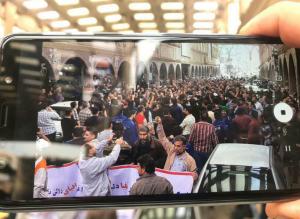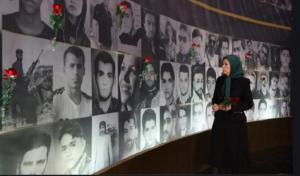(Video) MEK Iran: Resistance Units Marking the Anniversary of 2017 Uprising
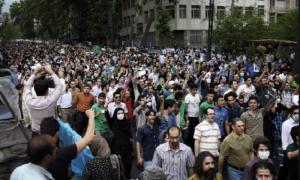
Resistance Units of MEK Underscored the religious dictatorship will be overthrown. Coinciding with the fourth anniversary of the Dec 2017 uprising in 140 cities in Iran, the Resistance Units and supporters (MEK/PMOI)marked the uprising.

The activities of the Resistance Units and MEK supporters included posting banners, in various parts of Tehran and other cities, including Mashhad, Isfahan, Shiraz, Qazvin, Hamadan, Zanjan, and Yasuj.

Some of their slogans were: “Massoud Rajavi (Leader of the Iranian Resistance) Velayat-e faqih is in its final stage of the overthrow,” “Massoud Rajavi: Objective conditions for the overthrow of the regime and establishing democratic change.
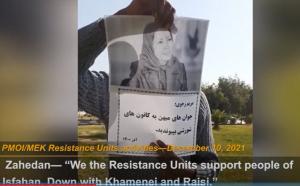
“Maryam Rajavi (the President-elect of the National Council of Resistance of Iran (NCRI)): Rise up to overthrow the velayat-e faqih regime,” “Maryam Rajavi: The Iranian people do not want to be under the yoke of the mullahs’ rule,”
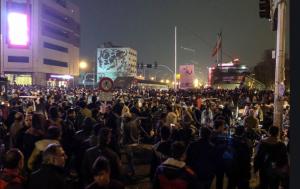
In late December 2017 and in January 2018, massive protests erupted throughout the Islamic Republic of Iran. The largest uprising since 2009 started in the northeastern holy city of Mashhad, the second-largest city in Iran, on December 28.
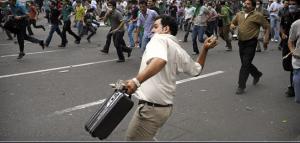
The opposition put the number of detainees at 8,000 but there are indications that this may be a somewhat conservative estimate. At least 14 protesters were killed in detention.
The opposition put the number of detainees at 8,000 but there are indications somewhat conservative estimate. At least 14 protesters were killed in detention.
The 2017 uprising, which began with large demonstrations by the people of Mashhad, spread rapidly and in less than 24 hours throughout Iran.
With the slogans “Death to Khamenei,” “Death to Rouhani,” and “Reformist, fundamentalist, the game is now over,” the people displayed their resolve to overthrow the medieval clerical regime in its entirety.
The activities of the Resistance Units and MEK supporters included posting banners, placards, and writing graffiti in various parts of Tehran and other cities,
The activities of the Resistance Units and MEK supporters included posting banners, in various parts of Tehran and other cities, including Mashhad, Isfahan, Shiraz, Qazvin, Hamadan, Zanjan, and Yasuj.
Some of their slogans were: “Massoud Rajavi (Leader of the Iranian Resistance): Velayat-e faqih is in its final stage of the overthrow,” “Massoud Rajavi: Objective conditions for the overthrow of the regime and establishing democratic change in Iran is at hand,”
“Maryam Rajavi (the President-elect of the National Council of Resistance of Iran (NCRI)): Rise up to overthrow the velayat-e faqih regime,” “Maryam Rajavi: The Iranian people do not want to be under the yoke of the mullahs’ rule,”
“Down with Khamenei, hail to Rajavi,” “No to the clerical regime, yes to a democratically elected republic,” “Down with the clerical regime, and Khamenei, hail to MEK,” “Hail to Maryam Rajavi,” “Death to the principle of velayat-e faqih, hail to freedom.”
Background:
In late December 2017 and in January 2018, massive protests erupted throughout the Islamic Republic of Iran. The largest countrywide uprising since 2009 started in the northeastern holy city of Mashhad, the second-largest city in Iran, and a few towns on December 28, and spread to some 142 cities and towns in all 31 provinces at a shocking pace.
The uprising was prompted by runaway prices of some of the most basic staples, such as eggs, but became political in a matter of just a few hours.
On the morning of December 29, protests emerged in the western city of Kermanshah, the center of the province of Kermanshah, which was struck by an earthquake in November.
It quickly became evident that what was happening was more significant than a short-lived protest – limited to a particular region of the country – but rather a reflection of deeper, more profound anti-regime sentiments.
Unsurprisingly, Tehran responded to the rebellion, as it did in 2009, with brutality. According to official figures, 22 protesters were killed, but according to the National Council of Resistance of Iran, some 50 protesters were killed and a member of the mullahs’ parliament cited the head of the Prisons Organization and said that they had registered 4,972 arrests.
The opposition put the number of detainees at 8,000 but there are indications that this may be a somewhat conservative estimate. At least 14 protesters were killed in detention.
After two weeks of relative calm, more than a dozen Iranian cities were again scenes of protests on January 31 and February 1, with similar slogans that rejected the regime in its entirety.
Shahin Gobadi
NCRI
+33 6 51 65 32 31
email us here
Iran Protests: Role of women in protests of Dec. 2017 and Jan. 2018
Legal Disclaimer:
EIN Presswire provides this news content "as is" without warranty of any kind. We do not accept any responsibility or liability for the accuracy, content, images, videos, licenses, completeness, legality, or reliability of the information contained in this article. If you have any complaints or copyright issues related to this article, kindly contact the author above.

